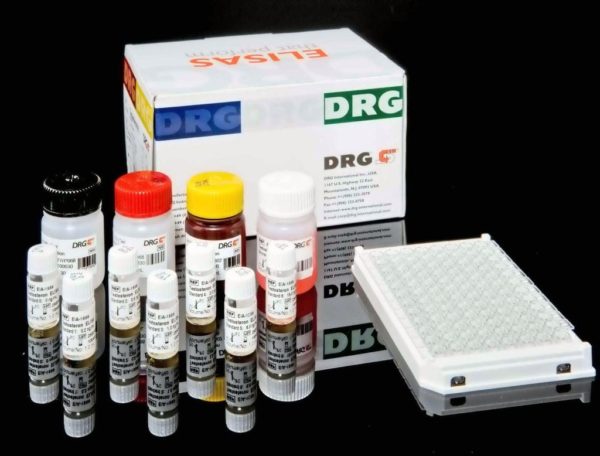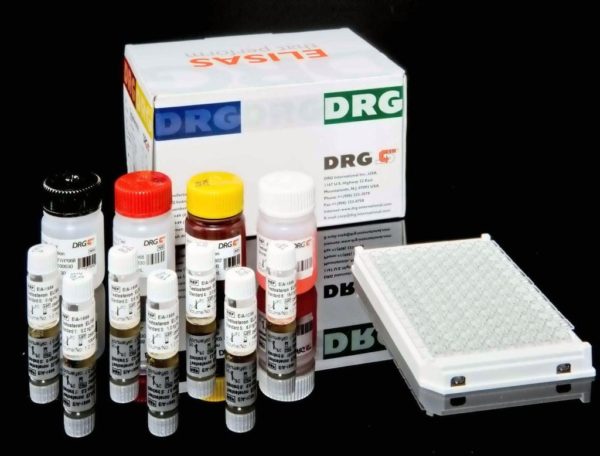Description
Enzyme immunoassay for the determination of IgG antibodies against polyribosylribitolphosphate (PRP) of Haemophilus influenzae type B in human serum and plasma.Haemophilus influenzae typeB (HiB) is a very common cause of invasive critical infectious diseases in children up to the age of six. Following infection the symptoms of the disease include: Pericarditis, osteomyelitis, meningitis, encephalitis, pneumonia, sinusitis and otitis. In many cases the disease is lethal or leads to neurological damage, which cannot
always be prevented by rapid antibiotic therapy. The underlying reason for the disease is very often a latent immunodeficiency with a specifically reduced humoral immune response to the polyribosylribitolphosphate (PRP) in the polysaccharide encapsulation of the bacterium. In children another reason is the immaturity of the immune system. Today often the term “immunocompromised patients” is used, comprising all acquired and innate specific and unspecific immunodeficiencies. As a result, in children of 3months of age or
older a vaccination with different sorts of PRP-containing vaccines is recommended. This can lead to a clear reduction in the number of infections with Haemophilus influenzae typeB. The titer of antibodies produced by vaccination can be used to confirm whether the vaccination has been successful. The HiBIgGELISA is used to measure the level of PRP-specific IgG-antibodies following a 4_6 week period after complete immunization to monitor the humoral immune status of children or other individuals at risk. Monitoring of the humoral immunostatus after vaccination. Verification of the diagnosis Haemophilus influenzae typeB infection by repeated monitoring of antibody concentrations. Risk assessment in immunocompromised patients leading to a failure of vaccination with a PRP-containing vaccine.
This group comprises:
Children under 2years
having had an infection with Haemophilus influenzae type B,Children with chronic,
recurring bacterial infections of the respiratory tract,Children with chronic otitis,Patients with confirmed humoral
immuno-deficiencies (IgG-2-deficiency, IgA-deficiency),Patients with confirmed
granulocyte deficiencies,Patients under chemo or
cytostatic therapy,Children after splenectomy,Patients with sickle-cell
anaemia,Patients with trisomy21
(Down) syndrome, and certain ethnic groups.
The HiB-IgG ELISA is a two-step-ELISA. The wells in the ELISA test strips are coated with PRP. During incubation of diluted serum or plasma samples specific antibodies bind to the solid phase (sample incubation). Following a washing procedure all unbound and non-specific components are washed away. During the second incubation step, the conjugate
reaction, a peroxidase-conjugated anti-human IgG-antibody (anti-human-IgG-HRP) labels the previously specifically bound IgG. In a second washing procedure unbound conjugate is removed. In a third incubation step the substrate reaction takes place. The peroxidase part of the bound conjugate oxidizes tetramethylbenzidine (TMB) to a blue substance. This reaction is stopped by adding sulfuric acid and the colour changes to yellow. The colour intensity is directly proportional upon the concentration of the PRP-specific antibodies. The absorbance is measured with an ELISA reader at 450nm. The antibody concentration in the sample can be determined using a reference curve.




